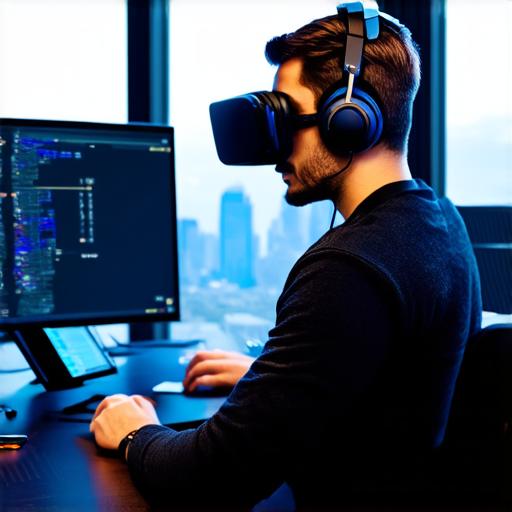What are Augmented Reality and Virtual Reality?
Before we dive into the specifics of acquiring skills in AR and VR, let’s first understand what these technologies are and how they work.
The Benefits of AR and VR
Both AR and VR have numerous benefits that make them attractive technologies for developers. Here are some of the most notable advantages:
- Increased engagement: AR and VR technologies offer a unique level of interaction that can keep users engaged for extended periods.
- Improved learning: AR and VR can be used to create highly interactive and immersive learning experiences that can improve knowledge retention.
- Enhanced creativity: AR and VR allow developers to create entirely new types of experiences, which can lead to increased innovation and creativity.
- Cost savings: AR and VR technologies can be used to simulate real-world situations, which can reduce the need for expensive physical prototypes.

Real-World Examples of AR and VR in Action
To give you a better understanding of what these technologies are capable of, here are some real-world examples:
- AR: IKEA’s augmented reality app allows users to see how furniture would look in their home before making a purchase.
- VR: The use of virtual reality for training military personnel has become increasingly common, as it provides a safe environment for soldiers to practice and improve their skills.
Acquiring Skills in AR and VR
Now that you have a better understanding of what these technologies are and how they can be used, let’s look at some practical steps you can take to acquire the necessary skills.
Step 1: Learn the Basics
Before diving into the more advanced aspects of AR and VR development, it’s important to have a solid foundation in the basics. This includes understanding programming languages such as Unity or Unreal Engine, as well as basic math and physics concepts.
Step 2: Experiment with Existing Tools and Frameworks
There are numerous tools and frameworks available for AR and VR development, each with its own strengths and weaknesses. To become proficient in these technologies, it’s important to experiment with different tools and frameworks to find the ones that work best for your needs.
Step 3: Join Online Communities and Attend Conferences
Joining online communities and attending conferences is a great way to connect with other AR and VR developers and learn from their experiences. These communities can provide valuable insights into best practices, as well as opportunities to collaborate on projects and share knowledge.
Step 4: Build Real-World Projects
Building real-world projects is an essential part of learning any new technology. By working on projects that simulate real-world scenarios, you’ll gain practical experience and a deeper understanding of how AR and VR technologies work in practice.
Case Studies: Examples of Successful AR and VR Projects
To illustrate the potential of AR and VR technologies, let’s look at some real-world case studies that demonstrate successful projects in these areas.
